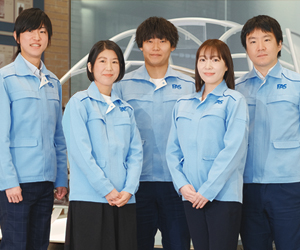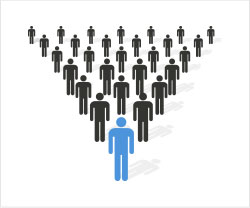The automotive industry has reached a crossroads. What does this turning point mean for the future business of Furukawa Automotive Systems Inc. (“Furukawa AS”), as a supplier of automotive parts and systems? To find out, we spoke with Tomoyuki Yamai, Managing Director and Operating Officer of Furukawa AS.
table of contents
- A new market value for cars: A shift to needs based on “Shared & Services”
- Improving livability in the next generation of cars by switching to flat cables in wire harnesses
- Furukawa AS is blazing a trail. What is the image of an ideal Furukawa AS employee?
- The keyword is the “DNA” inherited by Furukawa AS.
- Future trends in automobile consumption and Furukawa AS: The repositioning of vehicles from transportation means to an end
A new market value for cars: A shift to needs based on “Shared & Services”
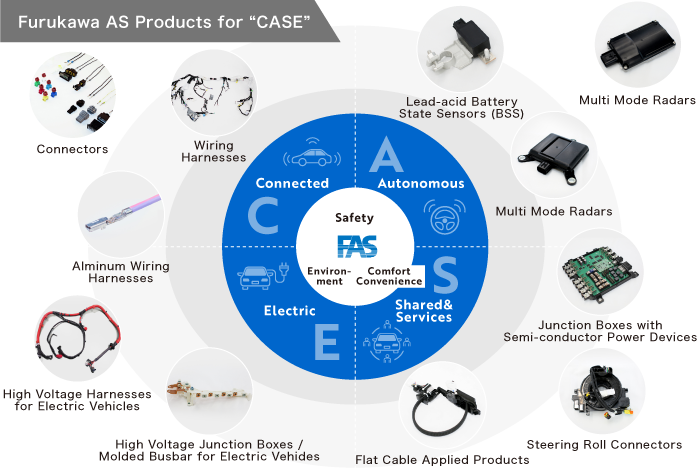

Some observers say that, as Shared & Services—the shared use of cars plus vehicular services—spreads, the number of vehicles on the market in advanced countries will enter a declining trend. I disagree. Because the rate of operation of each car will correspondingly rise, the replacement rate of cars, that is to say their consumption, will increase. So, I believe the number of vehicles shipped will not change appreciably.
Cars in the age of MaaS will need improved reliability and performance. At Furukawa AS, we’ve assembled a team to develop our own product standards to meet those needs. We’ve also started to develop products that will satisfy those new standards.
To give one example, car interiors will need to be made more spacious and comfortable, to make them more livable. This change will require advances in wire harnesses. One approach is to make products incorporating flat cables instead of conventional cables; demand for these products is now rising. In the expectation that this market will expand, we are working on broadening our lineup of products that serve this demand.
Improving livability in the next generation of cars by switching to flat cables in wire harnesses
Consider sliding doors, for example. To add comfort and livability, sliding doors are equipped with a wide range of features, including not only power windows but also power opening and closing, speakers, illumination and so forth. These features require more circuits, which make the wire harness connecting the door to the body thicker, more rigid and harder to move. Sliding seats present the same set of issues. By adopting flat cables in sliding doors and seats, we switch to a structure with a planar pattern of movement. This modification enables us to supply space-saving products with enhanced design appeal and improved durability.
Products that incorporate flat cables include sliding door harnesses, which accommodate sliding door opening and closing, as well as long slide seat harnesses.
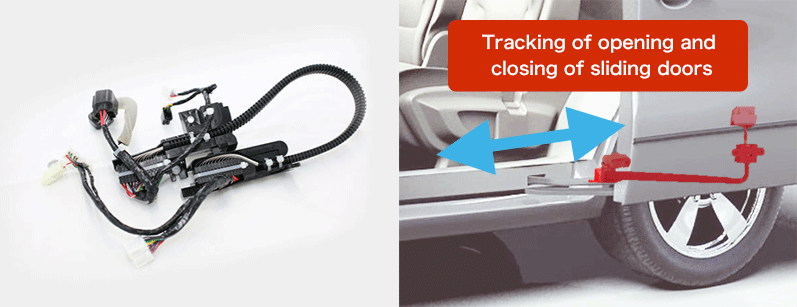
One of the products that led to the realization of this technology is the steering roll connector, or SRC. The SRC is a vital product for passenger safety and it’s a product category in which Furukawa AS is No. 1 in global market share.
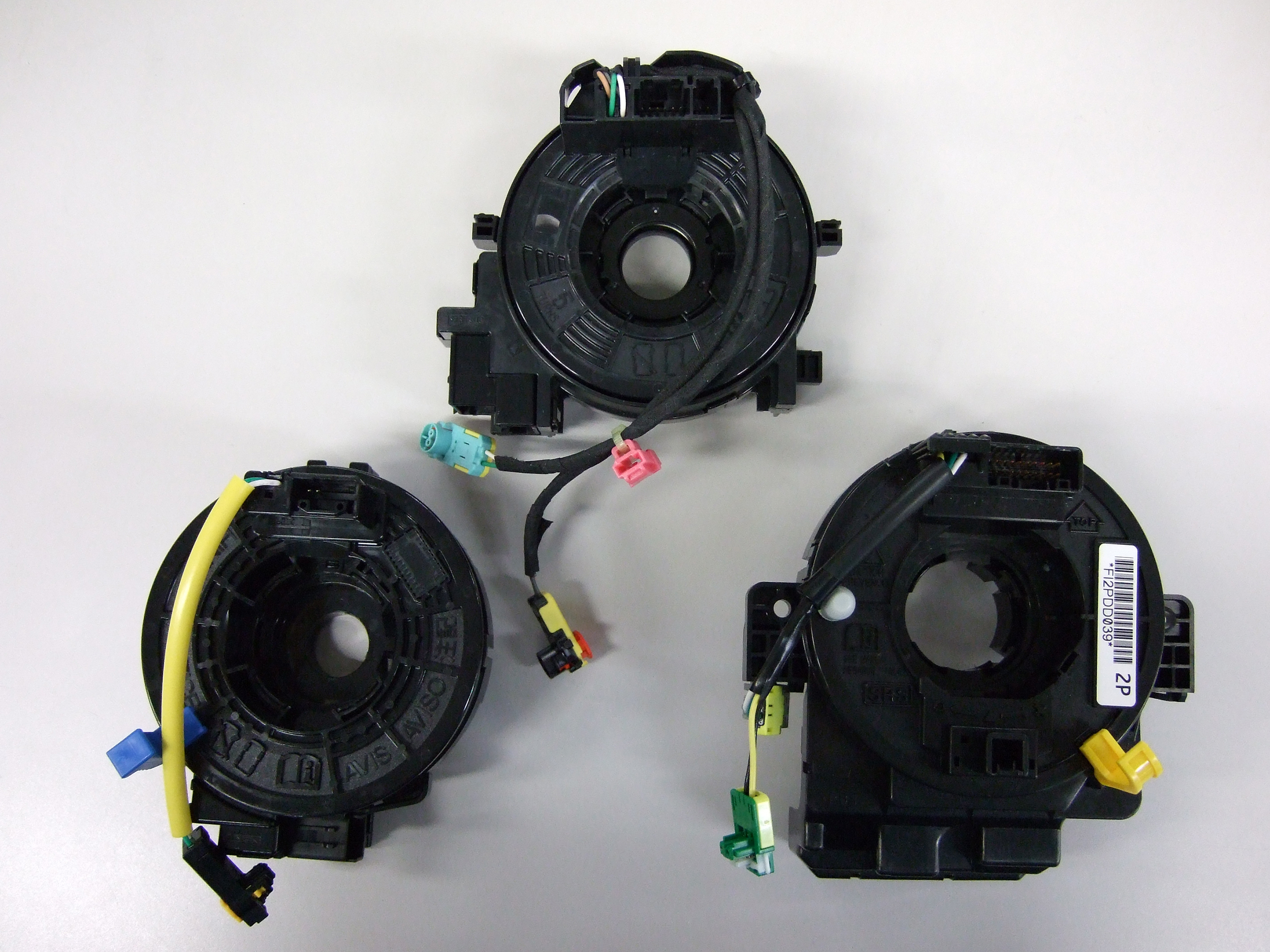
Furukawa AS was able to leverage the accumulated flat-cable technology it used in SRCs and its global supply chain to deploy solutions in other applications.
When installing long-sliding seats and, in the near future, seats that rotate for application in sharing cars, you need a power supply for the seats. Furukawa AS and the research arm of its parent company, Furukawa Electric Co., Ltd., are pursuing R&D on power solutions that combine their respective superior technologies. In addition to supplying power through these flat cables, the two companies are working on next-generation technologies for wireless transmission of power and signals. And we’re not just looking at power supply to seats. A whole array of ideas are now coming to the fore. This field holds huge possibilities.
That certainly sounds like a car of the future. The day isn’t far off when things we couldn’t imagine become a reality in cars.
Furukawa AS provides products that make vehicles more durable, based on solid reliability. The Company is also pursuing development beyond its traditional confines, toward the completion of sharing cars that respond to new needs such as next-generation livability and design.
Furukawa AS is blazing a trail. What is the image of an ideal Furukawa AS employee?
While we of course continue to handle the provision of products, we’re also exploring business development, to see how Furukawa AS can contribute as a provider of intangibles as well as tangibles.
We instruct our employees to participate actively in various organizations, to gather and share trends and opinion. We’re also cultivating close relationships with customers’ advanced development divisions, to discover business styles in which Furukawa AS can contribute.
I’ve heard that Furukawa AS is grappling with the creation of a new business model that is mindful not only of operations in-house but also of links with external parties.
What changes, if any, have occurred in the key points to consider in in-house personnel training?
In personnel training, we seek to cultivate people who can conceive of ways to deliver the tangibles and intangibles Furukawa AS and Furukawa Electric offer in ways that lead to real business. Our ideal employees are men and women who hold a wide body of knowledge and have a fine-tuned sensibility for the needs of our customers.
The keyword is the “DNA” inherited by Furukawa AS.
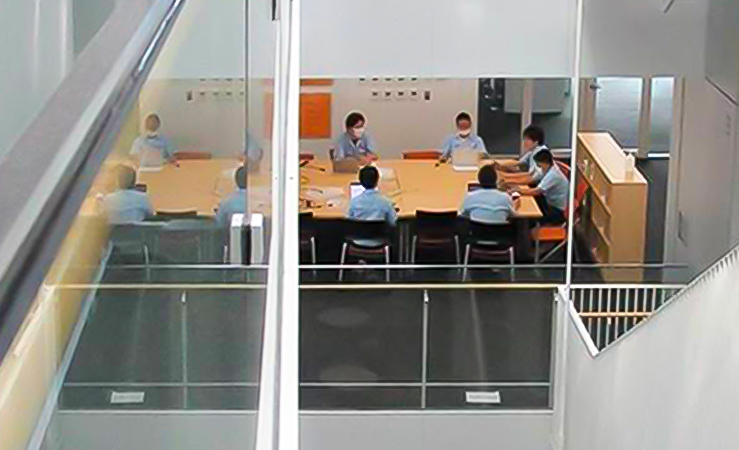
Starting in the previous fiscal year, we are working to cultivate people who can examine issues from a broad, multilayered perspective and express their ideas effectively both within and outside the Company.
Mr. Yamai spoke emphatically about the importance of people capable of inheriting the technological strength that is the DNA on which Furukawa AS was built, while also developing creativity and communication skills.
He provided a recent example illustrating how technology’s shift in emphasis to digitalization and software is critical in determining success or failure in product development.
I am convinced that Furukawa AS’ strength lies in its technological capabilities. In the past, we focused primarily on mechanical processing to finish materials into products. With the move toward CASE and MaaS, however, we needed to develop an organization and personnel that could deal with each aspect of a body of technology that was rapidly diversifying.
We had to develop experts in a wide range of fields, ranging from electronic circuits, software and algorithms to mechanism design, injection molding, pressing, mounting of electronic parts, and so on. We also knew we’d need personnel who could combine understanding of multiple such fields to evaluate products and processes.
We are strengthening mid-career hires, to hire experienced people who can hit the ground running.
Future trends in automobile consumption and Furukawa AS: The repositioning of vehicles from transportation means to an end
As with automated driving, the adoption of Shared & Services is spreading gradually, principally in advanced countries. As I mentioned at the beginning, we forecast that changes in rate of operation will increase the frequency of vehicle replacement, such that the number of vehicles shipped will remain essentially unchanged. In developing countries, we expect that the number of vehicles owned per person will continue to show a net increase, so the number of vehicles shipped will not decline but continue to trend upward overall.
Moreover, I believe that cars will become more than a means of getting around. Increasingly they will become tools that people spend more time with, for work and leisure.
To make that future a reality, we intend to provide products and services that can make cars highly reliable and highly livable.
So, cars will continue to serve as means of transportation but they’ll change into places where people want to spend time, becoming an end and not just a means, so to speak. As vehicle models and types proliferate, we can only wonder what kinds of entertainment value will cars come to hold.
As the adoption of Shared & Services spreads, the Furukawa AS products and services that support it should take on an increasingly indispensable presence.
> Links to Product Inquiries
In this installment we’ve heard about Shared & Services and Furukawa AS’ relation to it.
During our interview, I was impressed with the way people everywhere in the office were enthusiastically engaging in exchanges of opinions. The office is designed to facilitate easy communication among employees. For example, the atrium is designed to allow sunlight to stream onto tables, and meeting rooms are enclosed in walls of glass. I felt that these design elements epitomized the “DNA” inherited by Furukawa AS.
From existing technologies to next-generation technologies. From tangibles to intangibles. Furukawa AS is able to continue its development work while continuously thinking about changing trends because flexible thinking, adjusting nimbly to the changing times, is deeply rooted in its corporate culture. That culture is precisely why Furukawa AS will emerge as a powerful source of strength for a sustainable culture and the society of the future.
In our next installment, we’ll look at the relationship between Furukawa AS and electric vehicles.
We’ll continue to update with new interviews.
Look forward to more Furukawa AS project stories coming soon.
![[Vol.4] Project Story- Cars that change with CASE and MaaS, the future drawn by Furukawa AS (Part 2)-](https://www.furukawaas.co.jp/wp-content/uploads/2020/07/5S7A2405-1024x683.jpg)
![[Vol.5] Project Story- Cars that change with CASE and MaaS, the future drawn by Furukawa AS (Part 3)-](https://www.furukawaas.co.jp/wp-content/uploads/2020/08/re_5S7A2393-1024x683.jpg)
![[Vol.7] FAS in the World of Motorcycles (Part 2) (Interviews): Interviews with Developers](https://www.furukawaas.co.jp/wp-content/uploads/2021/10/wire_image.jpg)
![[Vol.11] Global Safety Forum Report: Thoughts on Safety and Health in Support of Furukawa AS](https://www.furukawaas.co.jp/wp-content/uploads/2024/08/IMG_6453-1024x683.jpg)
![[Vol.9] Welcome to the 9th FAS NEXT! The Co-creation of FAS Head Office and FAS Starts Here](https://www.furukawaas.co.jp/wp-content/uploads/2022/03/IMG_0373-1024x683.jpg)
